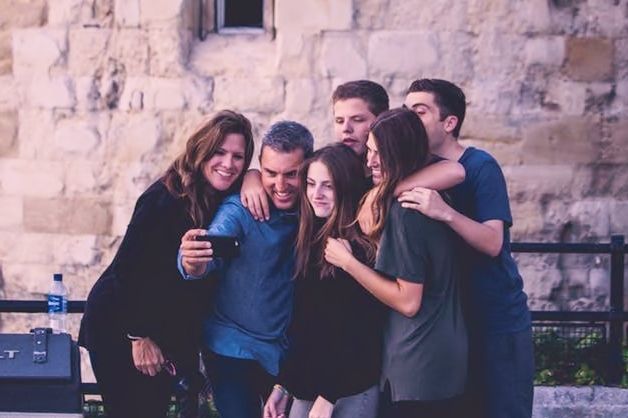
Gather people you love and host your own live event on social media.
In the wake of Harvey, Irma, and the Mexico earthquake, many of us are both motivated to help from afar and unsure how to do it. Cash donations are typically far more effective than sending items you hope are needed, but there are plenty of controversies after major disasters about the effectiveness of some charities.
When I was kid, it felt like the whole nation tuned in for telethons: fundraisers with celebrities appearing and callers pledging money over the phone. Because donors were promising to send donations in after the fact, there was always a gap between pledges and what actually came in. Even so, millions of dollars were raised this way every year, and there was the added bonus of community from the shared experience of tuning in.
Today, the nature of the online universe means you can take the best of the old model (charity and community) and do it your own way, but with no gap in the giving. A social mediathon is when individuals or groups announce a time frame in which they will post or stream live on social media in support of a cause, inviting followers, friends, and loved ones to tune in and donate. An ethical social mediathon handles no money itself: it offers viewers direct links to verified charities.
Because social mediathons aren’t bound to a centralized location, yours can be personalized to suit your cause and your community. You make your own parameters from content to platform. For instance, my friends and I are participating in our own grassroots social mediathon, Virtual Neighbors, October 6-8, for Harvey, Irma, and Mexico earthquake relief, and there will be readings, music, even cooking lessons.
Here are a few guidelines worth considering as you plan your own. (These come from Virtual Neighbors, which you are more than welcome to participate in or share.)
How to Make a Social Mediathon
Decide what to do. If you have a talent or skill and friends who’d enjoy it, go for it! Do a reading of your written work; sing solo or with your band or choir; perform instrumental music; have your drama club or theatre troupe perform scenes from a play; do a dance performance or cheer routine; do a cooking lesson; preach a sermon; have your athletic team show their skills; make an artwork while viewers watch; give a lecture; tell jokes; make your own music video; teach a skill; give a tour of a favorite location; or record yourself playing a video game. And if your real talent is social, host an online family or school reunion!
Decide where to record or broadcast from. You can record anywhere you have access. Decide what feels right for you and what you can pull off: a broadcast from your living room, your own backyard, a school, a church, a cafe, a theater, athletic field, or [fill in the blank].
Decide who will be participating. You can do this alone, with friends, your family, or entire groups. You can set a time just for you only on your social media, or get multiple participants to share a longer time slot posted on several pages or sites at once.
Announce your event on social media. Come up with an easy-to-use hashtag to help audiences find you. (Or use ours: #virtualneighbors). Remind people as the event gets closer. Encourage everyone who enjoys what you do to tune in, but also use this moment as a way to reach people who never get to see your talents on display.
Choose your platform and then livestream or post a recorded performance on it. Go live on Facebook, Instagram, or Periscope. Post on Musical.ly or stream on Live.ly. Host a video chat on Snapchat. Host a Google Hangout. Start a tweet thread on Twitter. (Whatever you’re doing. consider a trial run first!) Make sure to post at the announced time and leave up for as long as you like or your platform allows.
Choose approved and effective charities: Choose an organization with a high Charity Navigator rating (which means most funds will go directly to the cause, not the charity’s overhead) and one which you’ve determined is already mobilized for the cause you’d like to help. For Virtual Neighbors, we like Houston Food Bank (for Texas), St. Bernard Project (Louisiana), Global Giving (Caribbean and Florida), and Direct Relief (which has teams dispatched to all three affected US States, Mexico City, and the Caribbean).
Include only direct links to charities for donations. Do not accept donations personally. This will increase givers’ confidence, and it will cut out a middle man between donations and use.
One thing to remember is that, unlike with a telethon, size doesn’t matter. Your audience might be six people in your family or 1,000 in your social media circles—it's all fine, as long as you are providing opportunities to help. Because donations are direct, you won’t get the excitement of seeing a big number on a screen, and that’s by design: it’s about relief for others, not reward for you. Whether your friends/followers donate $50 or $500 to a charity on the ground in affected areas, the donations will go to work. And the more people hosting their own social mediathons, the more that gets done.
Better still, once you’ve tried the model out, you’ll know how it easy it is to use in future. The power to make a difference will always be at your fingertips.
